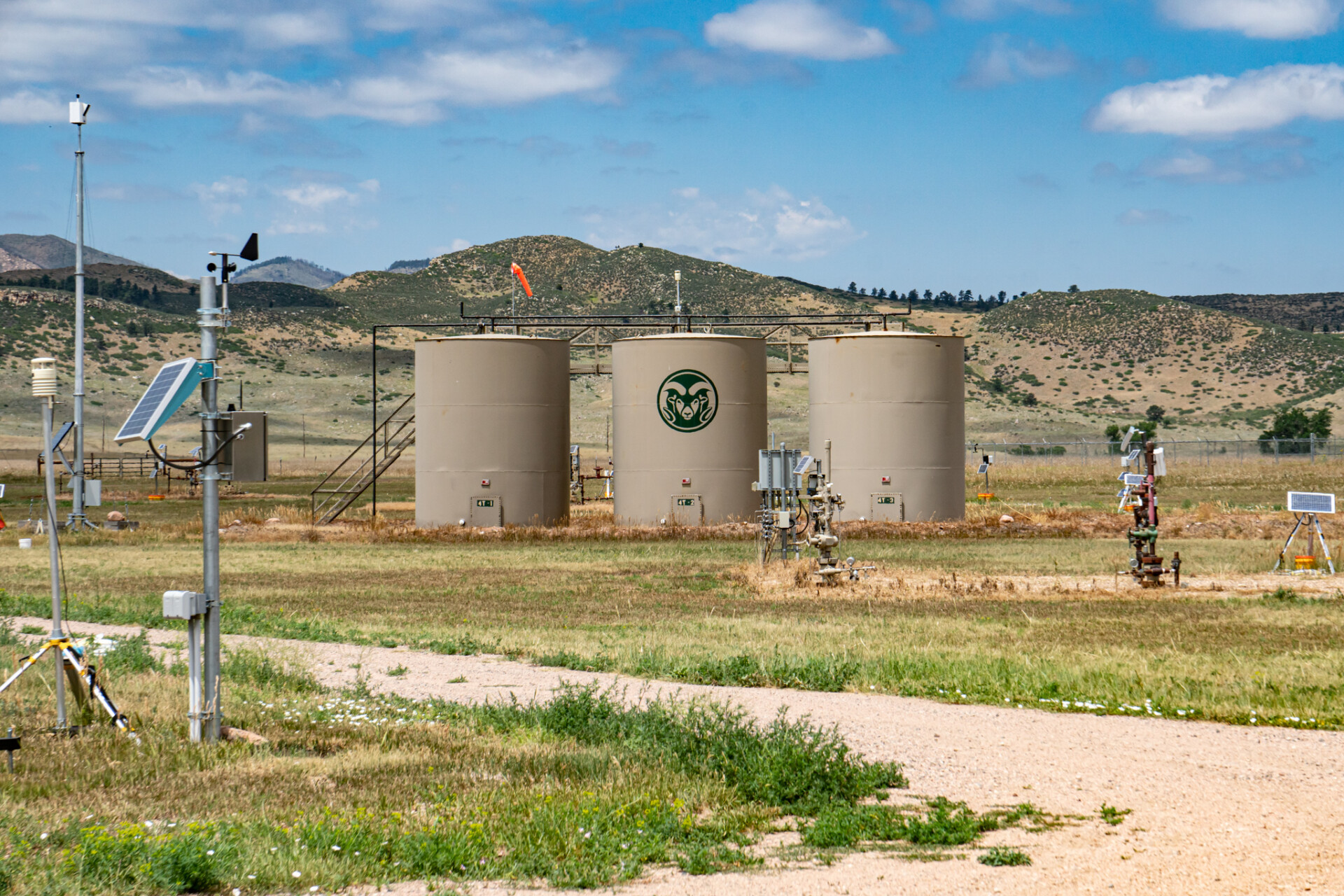
Methane emissions come from both natural sources, like wetlands, and human sources, such as livestock farming and landfills. Methane is also emitted throughout the oil and gas supply chain, from production at wells to end-use in homes and businesses.
“Natural gas – the stuff delivered to your home – is about 95 percent methane, so natural gas leaks are mostly methane,” said Dan Zimmerle, director of CSU’s Methane Emissions Technology Evaluation Center (METEC). “Methane is a potent greenhouse gas, with more than 80 times the climate warming impact of carbon dioxide over the first 20 years after release.”
Methane emissions from oil and gas production basins have been assessed at a variety of scales – from measuring emissions on individual components to estimating emissions from an entire production basin. Unfortunately, estimates at these different scales often disagree.
Emissions in basins
The Department of Energy’s Office of Fossil Energy and Carbon Management recently selected CSU Energy Institute’s METEC team to receive about $3 million for a project focused on measuring emissions in basins.

The METEC facility is located on CSU’s Foothills Campus.
The METEC-led team will measure emissions in the Denver-Julesberg basin, north of Denver, and in the Upper Green River basin in western Wyoming. The team includes the Center for Air Quality at the University of Wyoming, the Earth-Atmosphere Interactions Lab at Pennsylvania State University, and the aircraft survey company Bridger Photonics in Bozeman, Montana.
UW and CSU will work with operators in both basins to understand operational emissions, and the team will compare those results to basin-scale estimates from the Penn State tower networks and aircraft overflights from Bridger.
The study will leverage work done previously by CSU and UW in the Denver-Julesberg basin.
‘Great starting point’
“Our previous work in the Denver-Julesberg basin – and our relationships with operators in both basins – provides a great starting point to understand emissions,” said Zimmerle, adding that this is the third basin-scale coordinated campaign the team has conducted.
The research aims to demonstrate that high-frequency measurements can improve greenhouse gas reporting and close the gap with basin-scale estimates. These methods are critical for current and future certified gas programs. Developed field processes will support future methane monitoring platforms.
The team is also working with the Colorado Department of Public Health and Environment to develop a tower network that can be operated for an extended period after the project is completed.